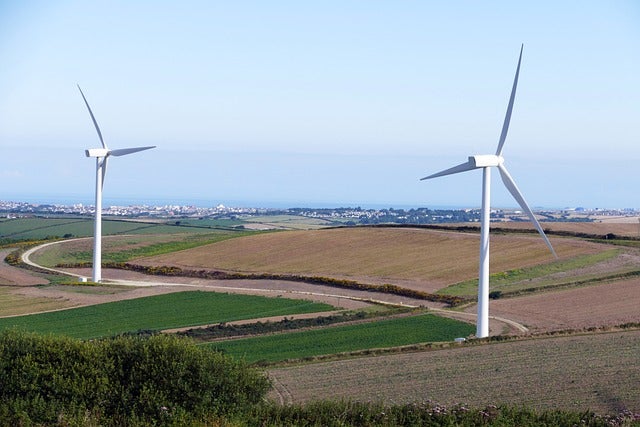
Recently, we have seen the key turbine manufacturers reporting losses in the billions.
The profitability of Siemens Energy, for example, is being seriously impacted by problems in the Siemens Gamesa wind business, which are overshadowing “excellent performance in conventional energy.” Siemens Energy’s results for Q3 2023 included a charge of €2.2 billion to address difficulties, both onshore and offshore, at Siemens Gamesa, contributing to an overall loss for that quarter of some 2 billion euro.
Onshore, good old-fashioned quality lapses – somewhat reminiscent of those faced a few years back by the gas turbine vendors, who had a tendency to over-promise and under deliver when launching advanced technologies into the marketplace – are proving to be a major issue.
The onshore quality problems mainly involve the 4.X and 5.X onshore platforms. They affect rotor blades, with the appearance of “wrinkles” in the layers that make up the blades, and main bearings, with the production of “particles”. There is potential for damage to rotor blades and main bearings after “some period of operation,” says Siemens Energy, noting that the issues were identified before customers reported problems. Also, the “defective components [are] not installed in the entire fleet”, so only a limited proportion of 4.X and 5.X machines are afflicted.
The affected turbines can still be operated, says Siemens Energy and the fleet remains in operation, “but to ensure a long-term runtime, the aim is to rectify the problems within the normal service intervals.”
A Siemens Energy/Siemens Gamesa task force has been established to deal with the 4.X/5.X problems, with support from AlixPartners, a consulting company which says it specialises “in those ‘when it really matters’ situations when how you manage through or take advantage of disruption will make or break the future of your company.”
“Certain third-party suppliers” have been “excluded from further deliveries” and “due to the developments at Siemens Gamesa, Siemens Energy is reviewing the current strategy and action plan in the wind business”, with details of the new strategic plan to be presented at the Siemens Energy Capital Markets Day November. That event is also expected to provide an opportunity to learn more about the root causes of the onshore wind problems and the subcontractors involved.
Corrective measures already in place include the introduction of stricter processes for supplier qualification, improvement of in-factory processes to ensure that products leaving the factories are of the required quality, and reduction in the product variants offered. 4.X and 5.X turbines are still being sold, but modifications have been implemented.
The expected total costs for remedying the 4.X/5.X quality issues, included in the Q3 2023 accounts, are put at €1.6 billion (although “the immediate liquidity outflow in fiscal 2023 is low”, with “the main part of the expected repair costs… expected in fiscal 2024 and 2025). There is also the possibility that Siemens Energy will be able to claim compensation from component suppliers.
The challenges being faced in the Siemens Energy offshore wind business, leading to additional charges of €600 million in Q3 2023, are different from those being faced onshore. Offshore the problems arise from cost escalation, meaning, for example, that projects already committed to contractually have been underpriced and cannot be completed profitably. Ramping up production capacity to meet demand has also proved difficult, leading to delays. Siemens Gamesa says it is currently in the process of ramping up various factories for offshore production or converting them to larger turbines, including in France, Germany, Denmark and the UK, and notes that “the continuing tight procurement market and the strained labour market are contributing to these burdens.”
The headwinds currently being experienced offshore are not confined to Siemens Gamesa, of course, and indeed wider concerns have even been raised about the viability of large-scale offshore wind as a means of tackling climate change.
Recently, we have seen the cancellation of offshore wind projects in the USA and Europe with cost increases cited as the reason. One notable example is the decision by Vattenfall to halt the development of Norfolk Boreas in the UK in its current form. There has also been the humiliating spectacle of a recent clean energy auction in the UK failing to attract any bidders from the offshore wind sector.
“Although demand for fossil-free electricity is greater than ever, the market for offshore wind power is challenging,” said Anna Borg, Vattenfall’s president and CEO. “Higher inflation and capital costs are affecting the entire energy sector, but the geopolitical situation has made offshore wind and its supply chain particularly vulnerable. Overall, we see cost increases up to 40%.”
What’s to be done about the crisis in offshore wind new build? There is an “urgent need for governments and industry to re-create the right investment conditions for developers and our supply chain”, says Mads Nipper, CEO of Ørsted.
According to Nipper, what happens at the moment with current frameworks results in one of the following:
- projects end up not being built;
- projects do not result in value creation and thus are prevented from attracting the billions needed to drive the energy transformation at the needed speed; and
- through unfit auction frameworks with high concession payments (= negative subsidies)* offshore wind is being rendered structurally less attractive relative to fossil fuel alternatives.
“All of this is detrimental to what governments want and the world needs!”, Nipper argues. “We can and must still act – but the time for action is now!”
This article first appeared in Modern Power Systems magazine.






